Support
You can support this site without any cost or disadvantage at all by clicking this link to Amazon or the one on the left before buying anything – be it underpants, a cupboard, a TV, a pen, a lens or a camera. Amazon is the only shop worldwide, I’m really satisfied with to a 100%, so I have no caveats advertising them. Of course, you can also directly donate a small amount of money, e.g. the amount you would have spent for a magazine, with the button on the left.
Canon EF 28-135mm 1:3.5-5.6 IS USM
My standard - zoom for "fullframe" and 35mm film.
I prefer it to and chose it instead of the 24-105mm L, because it has the same optical quality, is a joy to use and handle while being lighter, has IS, too, and the L costs 1.5x as much.
During this review, I will focus on comparing it to the L - lens more and more often than I normally would, because I have long thought about "upgrading" to the L and if it's worth it and always tried to find comparisons, which don't really seem to exist.
The 24mm wide end is the only thing I'd appreciate on the 24-105mm L, but on the other hand, 24mm isn't wide enough to really satisfy an ultrawide-lover like me, which is why I always bring an ultrawide anyway, and because of that, the gain isn't worth the cost for me. The rest, like a better build-quality and weather-sealing and so on, I simply don't need as the amateur I am.
Of course you have one stop less on the long end (it is already f/5.6 at 105mm), but this has never been of any annoyance to me, because f/4 isn't fast, too, and you have IS and if I really need speed on the long end, f/4 also is not enough and I choose a 2.8-zoom or a prime anyway.
The one only quality-related issue with this lens is play in the moving parts, that isn't great when new and worsens over time.
It is the second lens ever in the world with image stabilization (IS), after Canon invented this technology and implemented it in the 75-300mm IS in 1995. And while surely not as helpful as in a long tele, it's still very helpful in this lens and works great: Even though newer systems are "rated" as being up to double efficent (4-stop gain over this lens' 2-stop gain), for me and my "shake characteristics", it works nearly as well as the newest implementations. The efficiency of IS depends on the way your hand shakes - camera-shake is a random phenomenon, so a possible gain is always just a matter of statistics and depends on your personal physical abilities.
Excursus on IS: Within the lens are gyro sensors to detect small movement of the lens, e.g. due to a weak photographer drinking too much coffee. The electronics then move an optical element within the lens to compensate for this. Basically, this is a forced decentering of an element to move the picture projected to the film / sensor to make it stable... you jitter and move the lens a little to the right and the lens moves the projection a little to the left within miliseconds. As simple as that. IS was the last real revolution in lens design, to a much higher degree than Canon probably knew at that point. IS makes tripods obsolete. Even with this very first implementation of IS, if I really need to, I can handhold this lens at 70mm and get sharp pictures at shutter-speeds down to 1/2 second - not every shot and only if I concentrate on holding it steady, but I WILL get a sharp shot. At 1/15 second, I don't even have to force myself to stay calm. If there is a possibility to rest my elbow supporting the lens, it gets even easier. Today, with digital cameras and variable ISOs, I don't need shutter speeds slower than 1/2 second, never. What IS is NOT, other than Canon advertised it back then and sometimes manufacturers still do today, is to substitute speed (large apertures). Large apertures are used a) to reduce depth of field and b) to get faster shutter speeds. And while IS naturally can't help with a), it helps with b) only as far as lower shutter speeds are needed to deal with camera shake, but not to deal with movement of your subject! That's the reason, why IS is much more important with tele lenses than it is with others: At 300mm on "fullframe", you need something around 1/150 to 1/300 second to hold it steady. To not blurr moving people or most other moving objects, you'll need 1/100 second or, if they hold relatively still, e.g. sit on a table, lets say at least something around 1/50, at 1/25 you'll really need luck. As these needed speeds are much slower than the speeds needed to compesate for camera shake, IS helps. When using a 50mm lens (or less), you need 1/50 or less to deal with camera shake, which is also needed for your living subject, so that IS doesn't help here anymore. With short lenses, IS only helps with landscapes.
COMPATIBILITY
As a classic, genuine Canon EF - lens, it works perfectly with every Canon EOS camera, film or digital, ever made. There are no known issues in any combination.
PRICE
You can still buy this lens brand new, it's € 430,- at this moment on Amazon, down from € 529,-. Good samples sometimes sell for about € 200,- on ebay, but that's not very often.
Mine was relatively cheap, because, while being in very nice condition, it has some dust, visible on first sight, below the front-element and the seller mentioned this right in the auction-title and several times in the auction-text, so people were scared. But of course, single dust-spots are completely meaningless and even if it bothered me, it'd be a matter of few minutes to take the element out and clean it.
You can get working samples for € 100,- and below, when they already have developed a lot of play in the barrels and tubes, but I'd skip on these, because, while this lens is never build with tight tolerances, too much play in the barrels affects it's centering and has quite obvious negative effects on optical quality. I don't know, if this issue can be fixed in this lens, like in the 50/1.4 USM.
ACCESSORIES
As usual, this original non-L Canon is shipped without the shade, I wouldn't use anyway. They charge obscene prices for this cheap plastic-barrel, so I'd always by third-party if you insist in having a fixed shade, or use my favourite, a collapsible rubber hood instead.
It uses 72mm filter, which aren't very common today, but have been in the past, so filters are extremely cheap for this size used. It but looks and feels nice with a 77mm step-up-ring, and while the front moves when zooming, the filter - thread doesn't rotate, making the use of grads and polarizers easy.
GREAT.
MECHANICS
Made in Japan.
Metal lens mount.
The build-quality is typical for Canons non-L USM - lenses, like the 20-35, 24-85, 28-105, yes, even the 28-80 USM (first version): Not L-standard, with less metal and cheaper feeling plastic-body, smooth but not-as-silky-as-L zoom- and focus-rings, lighter and with more play: It really is a joy to use, carry and handle, everything is exactly in the right place, everything feels and turns solid but easy, it feels solid but lightweight - great! But if you gave someone who has never held or seen a photographic lens in his life the 24-105 in one hand and the 28-135 in the other in complete darkness and asked him, what the difference between the too might be, he'd probably answer: "one is more expensive".
Plastic filter thread, two-cam extending front, internal focussing, filters do not turn, so using polarizers and grads is easy..
"USM" is Canons fantastic ring-USM, which literallly focusses in supersonic-speed and nearly completely silent. Fulltime manual override is possible.
AF accuracy is fine with just a tiny little bit of front focus (+1 MFA on my 5D Mark II), nearly identical on my Rebel XT, 40D, 5D Mark II and 50E. This is, how most of my genuine EF - lenses behave.
Overall, mechanics are good in absolute terms and great in common use.
The extending front wobbles and has more play than you want, sometimes even in new condition. This worsens by use and over time and even up to a millimeter play in some positions (sometimes the 28mm-, the not-extended position, strangely) is normal with this lens.
If watching ebay, there seem to be more and more lenses, which have developed too much play in the moving parts over time, which really decenters the lens and severely effects optical quality from a certain point on. I don't know, if this is easy to fix, like it is in the 50/1.4, so I'd skip these samples. On the other hand, it doesn't seem to have the problem with the broken aperture-flex-cable, the 24-105 has, where it seems to be more common than rare after a few years. Other than with some Sigmas, while also far from trivial, is a very severe problem with the 24-105, because to reach the cable, you have to disassemble the unit, with which the centering is done, so it has to be completely recalibrated after fixing the cable, what you simply can't do yourself, it's simply impossible.
ERGONOMICS
Great! I covered most of this in "Mechanics": It feels and handles great.
While this isn't a small lens, it's still a lot lighter than any L-zoom and especially so for it's focal length range. Size DOES matter, also see Lenses: What's important? so this is a real plus.
Fulltime manual focus override is possible, the filter-ring doesn't move, it looks, works and feels great with a 77mm step-up-ring, you can turn the zoom-ring with one finger and the focus-ring is never in the way but easily rechable without loosing stability. In comparison to the 24-105 L I find the weight better balanced on a 5D Mark II and Ken Rockwell is right when he criticizes the crammed wider end of the zoom-ring on the 24-105 L: The 24mm to 35mm - setting are way to close together on the L and the zoom-ring is a lot harder to turn, too, so it feels a lot more uncomfortable in use. While I don't rate this as a show-stopper like Ken, I still greatly prefer the 28-135 in this regard.
The used materials, a combination of metal and high quality plastics.
The lens extends a lot with zooming, but because it is so light, it doesn't make it too front-heavy, at least not on a "fullframe" body.
There is a focus-scale with infrared-focus-indices but no depth-of-field-scale.
Overall: GREAT! One of my favourite lenses on all in actual use.
OPTICS
Optics are very good for a standard-zoom, great for it's focal length range and not worse than the 24-105L in my opinion.
OK, I will be fair. There indeed seem to be quite big sample-variations. There are sample-variations with every lens, but the range of differently performing 28-135's on the market seems to be broader than usual, especially for a genuine Canon-lens. My former camera-repairman, who sadly went out of business, stated one time, that this lens got a lot worse when or shortly before Canon had introduced the 24-105 L. And while I'm really not a fan of conspiracy theories and really don't think that a huge company like Canon would ever deliberately start building a lens worse than before, it would of course still make perfect sense, if Canon would have lowered the expenses for quality control or the tolerances, as soon as the L was on the market.
In any case there are test-images on the web, that are definitely worse than my sample. And I have rented a 24-105 L two or three times and these samples weren't considerably better than my 28-135 and one even was definitely considerably worse, especially on the long end regarding sharpness.
"Just shoot" is a very nice thing to say about any lens and this is the case here. This lens doesn't have a bad setting.
The minimum focus distance is 0.5m, so at 135mm, the maximum magnification is aprox. 1:5 and as such isn't as good as the newest constructions and may not replace a seperate real macro-lens as good as the best do, but in many cases this is still very good and enough for anything: This an object 18cm long filling the frame horizontally - meaning an object that I can still hold between my thumb and my middle-finger, even if it's the limit.
Distortion is medium on the wide ende and minimal on the long end, changing from barrel to pincushion, as expected. This is very good for a zoom, truly impressive for a 5x lens and a whole lot better than the 24-105 L.
Vignetting is hardly visible, very well controlled. It diminishes when zoomed in or stopped down.
The aperture is made of 6 blades, giving you not very smooth out-of-focus highlights with very boring 6-ray-light-stars. This bothers me.
This lens is very good for infrared-photography, with no hotspot under any conditions.
Flare, again, is nothing to worry about with this lens. While I think, that a lens less prone to flare and especially ghosting is not always better, as at least ghosts can be a very nice tool to show the lighting conditions in your pictures, this 28-135mm flares slightly and produces some ghosts with a bright source of light in or just outside the frame, but not at all on an annoying level. I'd say, that I didn't realize a difference to the L. You can shoot directly into the sun and if you don't get blind doing so, the pictures look great all the time, with just some ghosts in the opposite corner of the photo. If you really manage to "glow-out" your picture due to flare, it is easily shielded by one hand or avoided by changing the angle a bit.
It's color reproduction seems to match my other Canon EF - lenses and is maybe a bit cooler than some of my older Sigmas.
Lateral CAs (purple/green fringes along high-contrast edges), when not corrected by newer EOS cameras (or nearly all Nikons), are visible with this lens at every focal length in the corners, but well controlled in general. It's worst at the wide end. It's definitely not worse than the 24-105. I'd always correct this in postprocessing, otherwise it annoys me.
The IS is Canons very first version, but works really well. I'm sure to get a sharp shot at 1/4th of a second at 28mm, even if not every shot taken is. The system in the 24-105 L might feel a bit "safer", but the main difference for me isn't in efficiency, but in the way the systems work. The 28-135 "freezes" the picture, so that moving the camera really results in kind of a "jumping" picture, while the 24-105 L seems to react faster or refresh more often and looks "smoother". But when it comes to not blurring my shots, with the 28-135 I seem to have to "hit" an interval, where the picture doesn't jump, which I can achieve by concentrating more on holding it steady or by simply firing several shots, while with the 24-105 L, holding it more steady doesn't seem to make a difference, but the rate of not-blurred shots isn't considerably higher, not when comparing a burst, not when comparing single shots. The new IS in the 24-105 L simply seems to have been made more convenient or less obvious.
Sharpness is one of the most overrated qualities of lenses. That being said, this lens is great. As mentioned above, there seem to be sample variations, though, as my example seems to be a better one - what, by the way, would match the conspiracy-theory, as my sample has an extremely low serial number ;-)
The short version of the sharpness-test - again - would be: "Nothing to worry about, just shoot". Sharpness is always at least very good in the center at every aperture and focal length and does only differ from good to very good in the corners, even wide open, at every focal length. When writing this and looking through my testshots, I realize, that I make the comparison with the 24-105 L as meaningful as I want to, because I simply don't have a complete test-row of both lenses, that really shows the same object at the same settings. Maybe, when I get my handy on a 24-105 L again, I will add this. For now, I at least can show a basic comparison and I think I can nonetheless make my point clear: OK, the 24-105 L - shots are at f/4 at 105mm, the 28-135's at f/5.6 and I only have 24mm shots from the L and 28mm from the 28-135 and even adding to that, I do only have testshots from the worst sample of the L I have rented so far...that's not very scentific, I know, but anyway it shows, what I want to show: That a) the 28-135 is not considerably worse, not to a relevant degree, and b) that sample variation of both lens-types makes more difference than the optical construction.
These are all 100% crops from 21MP JPGs from my 5D Mark II:
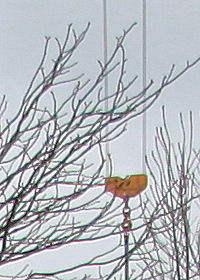

28-135 @ 28mm f/3.5, left: center, right: corner, you see CAs, but the out-of-focus-branches in front are surrounded by LoCAs, both is correctable. The main difference to the center is a loss of contrast, not primarily sharpness.
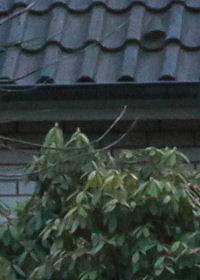
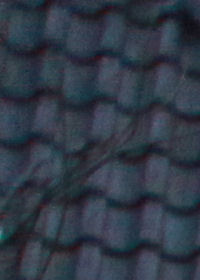
24-105 @ 24mm f/4, left: center, right: corner. Sadly I don't have shots of the same branches, but you can spot the CAs in the right crop, too, and this is definitely softer than the 28-135 - but yes, at it's 4mm wider minimum setting.

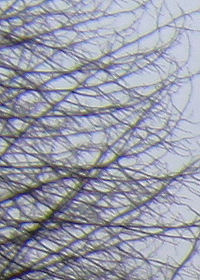
28-135 @ 35mm f/4.5, left: center, right: corner, again, primarily contrast-loss, not sharpness.
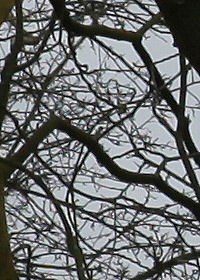
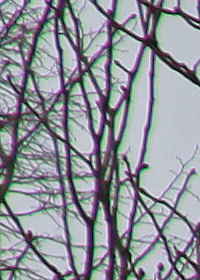
28-135 @ 105mm f/5.6, left: center, right: corner (CAs + LoCAs, correctable)
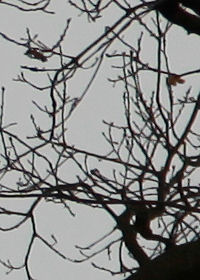
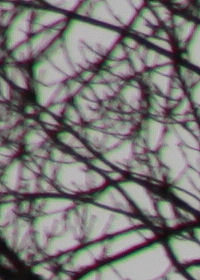
24-105 @ 105mm f/4, left: center, right: corner. The same CAs + LoCas, OK, at f/4.
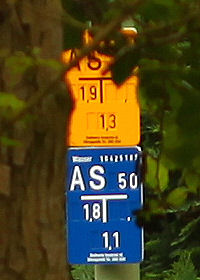
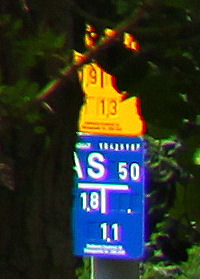
28-135 @ 135mm f/5.6, left: center, right: corner.
Alternatives
Of course, there are lots of alternatives, mostly with lower zoom ratios, namely the 24-85, 28-105, 24-70, 28-70, 28-80, all by different manufacturers, too. But the only real alternative is the one I have compared it with all the time: the 24-105 L, because it is the only one with a similar zoom-range, similar size and with IS. The f/2.8 - lenses are all a lot more expensive and a lot bigger and heavier, mostly without IS (apart from the actual Tamron) and have a lot lower zoom-ranges and, because of that, versatility. And the 24-85, 28-105 and so on, while being great lenses, too, don't have IS. So, for me, it comes down to the choice of the 28-135 vs. the 24-105 L and as I hope to have shown above, the 24-105 is great, but not worth the higher price for me - at this moment it costs about 2 times as much, new or used.
This lens is simply great: It's a relatively long tele, it's a wide-angle, it's always good optically without having to care about anything.
Und Samsung ist ja doch eher ne recht coole Marke, da lohnt es sich ja zumindest mal zu fragen…
A word about supporting this site
I don’t run this site to earn money. I have a real job to earn my living with, a completely normal job. Since everything I write about here I have bought myself, for myself and with my own money from normal shops or ebay-sellers to actually use it, how much and what I am able to write about , depends on the amount of money that I can save and invest in equipment with good conscience. I share all this, because I want to, not to sell it. But when you find this helpful, maybe even as helpful as buying a magazine or book, of course you can support me, if you want. Your benefit is, that you help me being able to afford things to write about here.
You can use the “Donate” – button on the left to directly send a small amount of money (or a big amount, if you insist). You don’t need a paypal account to do so, every method is possible. If you decide to donate 99 cents, I’m thankful for it, because 10 people being as kind as you, make one new filter tested! The default currency is US $, but it works well with € or nearly any other currency, too.
But even more simple and without any cost or other disadvantage at all it is, to simply use this link to Amazon (or the one on the left) before buying anything there. For you it’s exactly the same as going there directly by typing the web-adress in your browser, you just klick this link first! It doesn’t matter, what you buy or where in the world you buy it, be it underpants, a pen, a cupboard, a lens or a Leica M9, be it in Germany, the USA, the UK or Australia: Amazon’s servers simply realize, that you came there through the link on my page and I get a small percentage of anything you buy FROM THEM. There’s absolutely no cost or other disadvantage for you, Amazon simply pays for my “advertisement” through this. I originally didn’t want to ever do any advertising personally. But then I decided to break this rule for Amazon. I’m a completely satisfied customer and buy everything from them. It’s the only shop in the world I would personally and on my private basis really rate a complete 100% in every regard. They have perfect service, even do call you back, answer emails with real, personal writing, extremely fast delivery even on Christmas-day, always perfect and completely new items, are never considerably more expensive than the very cheapest internet-sellers, have an extremely fast refund-system without being picky or having ever displeased me in any way and sell every good I have ever wanted to buy. They work on a completely different level than any retailer I have ever tried, and deliver it directly to me, without robbing me time and money to drive to the city or mall. I wouldn’t advertise them, if I wasn’t convinced, that it is OK to do so.
